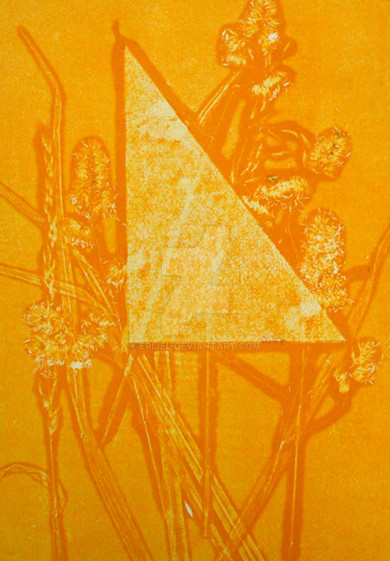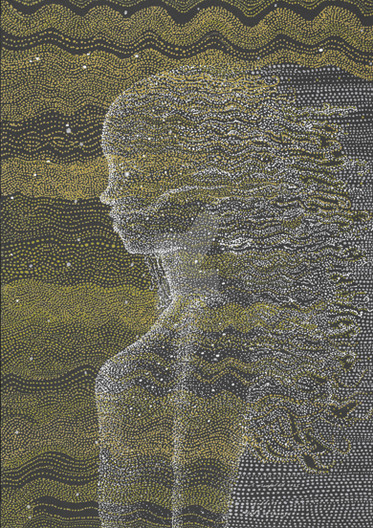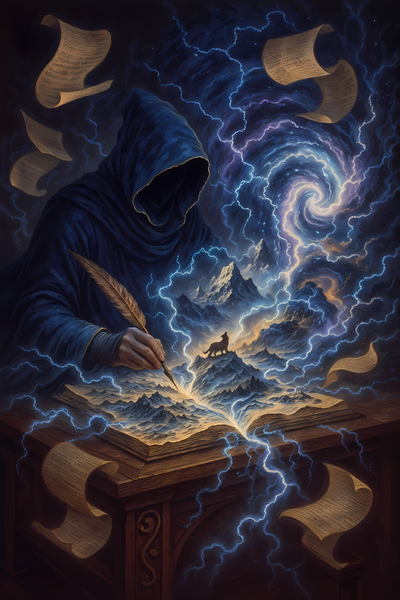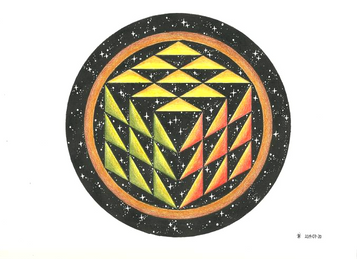HOME | DD
 Avapithecus — Everything
Avapithecus — Everything

#andromeda #blackhole #cmb #diagram #everything #galaxy #milkyway #penrose #space #spacetime #stars #universe #whitehole
Published: 2024-01-01 12:17:41 +0000 UTC; Views: 6751; Favourites: 20; Downloads: 0
Redirect to original
Description
Well that's a pretentious title to kick 2024 off with. Like oh yeah guys, I drew everything. All of it. That's a wrap. You can go home now. I suppose you expect me to write up a “biography” on everything like I do all my blurbs too… I mean… I'll try? But I don't want to hear anyone going around telling people that I know what I'm talking about, got it?In the beginning, about 13.8 billion years ago, there lay the asymptote of our understanding of existence as we know it. There was no “before” and there was no “nothing”, as these are vocabulary words which only apply to time and space, two things which did not exist yet. To ask what was “before” the beginning is akin to asking what is “north” of the North Pole. Then, there was everything, the whole Universe bundled up in an infinitely dense, infinitely hot mote, existence born from a wrinkle in the nothingness. It was an egg which our greatest minds have yet to crack, a state in which the four fundamental forces that govern every tick and tock of our reality today were compressed into one impossibly incompatible equation that will earn the physicist who discovers it fame beyond their wildest dreams, and also a cookie. As if frustrated with its own impossibility, though, the infinitely small blew up under its own weight in one big bang. That's good, that's catchy, someone write that down.
One planck second (the definitional shortest amount of time for anything on the smallest scale to have any meaning whatsoever, 10-44 seconds to be exact) into this whole “existence” thing, the always finicky force of gravity fucked off from its three conjoined siblings, and has since refused to play nice with the quantum rules that everyone else got behind because that's just what gravity do. The strong force was next to move out, nestling out its own layer of the now-grapefruit-sized Universe at 10-36 seconds after the Big Bang. The electromagnetic and weak forces stuck together the longest, but at 10-12 seconds after the Big Bang the band split up for good. While this was a travesty for fans everywhere, it did mean that now the rule book was in place to govern the entire rest of Creation. Each of these now separated forces (except maybe gravity because gravity is a problem child) is carried through ripples in their own quantum fields, coalescing into things which we may now appropriately refer to as “things” whatever the hell that means. These first particles were quarks and leptons, the latter of which includes things like electrons and their positively-charged, mustache-twirling mirror universe counterparts, positrons.
By this point, though, things were still too hot for this particle soup to do anything with itself. That's alright, because at 10-9 seconds into existence, the Universe had already expanded to a billion kilometers wide, so, you know, plenty of space for that heat to disperse. By the time the first second of eternity had finally passed, the strong force was ready to mash together quarks in all sorts of wacky assortments to create hadrons (protons and neutrons), while the electromagnetic force looped electrons into the system to give us our first hydrogen atoms. Now, hypothetically, for every component of matter that was created in all this bullshit, there should have been an equal amount of antimatter created (that's just matter but all the charges are reversed), but clearly there was some weird little discrepancy that no one's quite worked out yet because matter and antimatter annihilate each other on contact and… well… we're still here. Like don't get me wrong, it was a glorious battle. Everything you see in the cosmos today is one billionth of the amount of matter there originally was in the Universe before the rest all got zapped out of existence by antimatter. I personally blame Phil for being late on his lunch break when the fighting went down. Fuck you, Phil.
Phil aside, now we're finally getting into some time frames that you could actually get bored over if you were stuck in line at checkout. 3 minutes into the Universe's existence, Big Bang nucleosynthesis one-upped this outdated hydrogen fad already by giving us shit with two and three protons! That's helium and lithium, respectively, though apparently there's only about a third as much lithium in the Universe as we'd expect so… chalk that up to Phil for hogging all the lithium too, I guess. New atoms are pretty dope, and I'm sure it would've been a spectacular sight to see if… you know… we could see it. Unfortunately, despite being ridiculously huge, the Universe still wasn't huge enough for photons to escape the roiling clouds of primordial elements until about 300,000 years after the Big Bang. This is when everything became wispy enough to free light from its shackles, and we can still see that wondrous liberation in the Cosmic Microwave Background (CMB), which was initially mistaken for pigeon shit. It's okay, I find my baby photos repulsive too.
By about a billion years after the Big Bang, all that shit floating around had been drawn together by gravity into big burning balls of gas known as Taco Be- I mean- stars. Stars are handy because they're pretty to look at, and have all the awe and might of the most furious gods. They take all that sweltering helium and hydrogen and squeeze them together to form all the nifty elements up to atomic number 26 (or “iron” as the kids call it). Now you may be thinking hey wait aren't there 92 elements asterisk? Well yes asterisk, but even the Lovecraftian power of stars isn't enough to fuse iron into anything higher up on the periodic table. The forces required for that to happen are only available when a star goes out in a totally wicked explosion called a supernova, perhaps even the one you have on that poster in your room, you nerd. To get us to everything on the other side of that asterisk, the Universe would have to come up with something even more powerful than the blazing inferno of a supernova: the innate human desire to smash two things together to see what happens, but I'm getting ahead of myself.
For stars too massive and edgy to go out in an explosion of majestic color, there is an alternative available: cave under the weight of all your crippling pressure and retreat into an inescapable pit of darkness! I just call that Sunday, but astronomers call this a black hole, an object with a gravitational force so strong that not even light can escape. Particularly chonky black holes are creatively dubbed “supermassive black holes”, and these can often be found teaming up with the mysteriously attractive dark matter to form absolutely gorgeous spirals of stars called galaxies. One such black haunting eye is Sagittarius A*, which lurks at the center of a galaxy formed just 800,000 years after the Big Bang. This beautiful spiral streaks across the heavens like a sparkling river of a goddess's spilt breast milk. Is that TMI? Probably, but it's the metaphor we got stuck with, so we'll just have to deal with its inhabitants naming it the “Milky Way”.
Many stars have lived and died in the arms of the Milky Way. The embers of supernovae seed the cosmos with infant stars to keep the skies alight evermore. In one such cradle, around 4.6 billion years ago, a wailing yellow star ignited, a newborn destined to become a veritable god to all the dust in its gravitational pull. Dust became rocks, rocks became boulders, and boulders became the celestial spheres, the wanderers: planets. Some of the dust remained gaseous, forged into titanic giants like Jupiter, the only thing even remotely close to being able to steal the gravitational spotlight from its sun. It's sheer mass simultaneously cleared the sun’s innermost orbits of debris, and flung its undesirables back at the four smaller rocky planets bathing in the sun’s rays. The third rock from the Sun, formed 4.5 billion years ago, took a particularly brutal beating. In its screaming infancy, this hellish world of fire and brimstone was assaulted by another planet, whose mass was either swallowed or flung into the orbit of the larger sphere. The wreckage would remain there for as long as anyone could remember, a tombstone in a perpetual dance with its mother's grave.
This third rock from the Sun baked in oceans of magma and sulfur, its surface indistinguishable from Hell itself. Then, at last, 3.8 billion years ago, the temper tantrum cooled, and the sky allowed itself to cry. Rain fell, fires extinguished, water cascaded, and somewhere in one of those warm little ponds, for the first and only time that we're aware of, chemistry sparked something indescribably revolutionary: life. The exact origins and even definition of this argument with entropy are constantly under scrutiny, but this miraculous phenomenon would come to define the third rock from the Sun. From humble green sludge on a rock came creeping things which exploded in diversity around 530 million years ago. Creeping things eventually left the water behind, the brutal trials of natural selection favoring an experiment of turning fins into legs. Though life would endure six absolutely devastating trials over the course of millions of years, it would find a way through at least five. Eventually, a very distant and very hairy descendant of those first land-fish would find the capacity to stand not on four legs, but two, delegating their hands and their minds to more important tasks. Their minds ran away, the spark of sapience convincing these “humans” of planet “Earth” to finally look back at the Universe, tilt their heads, and ask the immortal question: “why?”
Perhaps they will one day find the answer to that question, perhaps they won't. Perhaps they won't survive their unimportant wars and abuse of their own climate, and no one will be around to ask the question anymore. Or perhaps, as they have always done, they will find a way to beat the odds, and the story of how will be sung by their descendents living amongst the stars as gods themselves. I don't know, but I know which timeline I'd like to encourage. Our mother Earth only has about 500 million more years before the Sun gets too hot for life to be able to exist at all anymore. Then of course the Sun will expand into a red giant that'll swallow the planet whole in 7.5 billion years time. We need to fix that, so let's drop all the violence and stupidity so we can extend our time limit, ey?
Of course, nothing is permanent, not even gods. Our most resilient stars, red dwarves, will extinguish in 100 billion years. In 2 trillion years, the expansion of the Universe will push other galaxies over our cosmic horizon, rendering the rest of Creation invisible to us. Natural star formation will exhaust its options in 100 trillion years, and entropy will disassemble our galaxies in a quintillion years. Assuming protons decay, which seems to be an open question still, then they'll all have gotten it over with by 1038 years from now. Even black holes evaporate with time, Hawking radiation withering them all away to nothingness in a googol years. This will be Heat Death, the end of anything with any discernible meaning, absolute quantum randomness. Is this truly the end, though, or just one definition of the end? Is the Universe doomed to darkness, spending eternity at the mercy of inevitable configurations like dreaming brains in the void? Will gravity finally come out of its room and crunch the Universe back to square one? Is the end of time in fact synonymous with the beginning like some sort of eldritch game of Asteroids? Is “everything” even all there is, or is there some multiverse churning along outside in a sea of unfathomability? I don't know, I don't claim to know, and anyone who does is either a fool or a con man. I mean look at me, I believe in a big burly viking in the sky who beats the snot out of a big snake with his magic hammer. Clearly I'm not a reliable source of information. I think all these existential quandaries are distracting us from the real question, the most important conundrum facing humankind right now:
Where the fuck did I put my sandals?
OKAY, design notes for “everything”, I'm sure this'll be a breeze- This is an artistic experiment I've actually wanted to try for a while. I mean I talk a lot about the Drake Hero Universe, but I've yet to draw the Drake Hero Universe, ey? I never got around to it because the idea of drawing “everything” is unsurprisingly a little intimidating, and a pain in the ass to figure out how to accomplish. I mean what even is “everything” and how does a puny three-dimensional little monkey girl on a mostly harmless rock even begin to put that on a single sheet of printer paper? A lot of efforts made by much more talented artists than me pretty much tackle it as a sort of logarithmic sphere, centered on the Earth with increasingly bigger structures plastered around it in layers. That's all well and good, but I wanted to take a different approach, something a little more abstract which shows not just space but time, because time really is a dimension in its own right, and it'd be a little reductive to only depict our little slice of the present. Well okay, that's a nice thought, brain, but how the fuck do you expect me to do that? Thankfully, I block out the horrors of working retail by listening to way too many documentaries, and while I don't even come close to understanding what the big brain lab coats are talking about, it at least does introduce me to some snappy diagrams which often look more like fantasy runes than mathematical formulas.
One such diagram which ended up becoming the base of this entire piece are Penrose diagrams, named for their inventor, physicist Roger Penrose. Penrose diagrams are a way of compactifying infinite spacetime into a finite graph, with the Y axis representing time exponentially shooting off into infinity, and the X axis being the same for a single dimension of space. The graph is shaped in such a way that light always moves at 45 degrees angles, and therefore simplify its trajectory into a black hole, represented by their own regions situated above the primary diamond. Conversely, light enters the primary diamond through the bottom, which is meant to represent a white hole. I don't think I'm doing a very good job at explaining it, just know that the top corner represents infinitely far into the future, the bottom corner represents infinitely far into the past, and the two remaining corners are infinitely far into space. All I have at my disposal is a box of Crayola pencils, so unfortunately I think my ability to capture the logarithmic nature of the graph itself was kind of nerfed. Just type in “Penrose diagram” into Google and you'll get a better idea of how the curvature of everything is supposed to work.
Starting on the outside and working our way in: the black hole regions at the top were relatively straight forward. We've had direct photographs of black holes since Event Horizon Telescope's haunting 2019 snapshot, and while this absolutely beautiful image is a privilege to have witnessed when it first came out… it is a little blurry, innit? The most famous depiction of a black hole in media is probably the trippy visual from 2014's Interstellar, which I… haven't seen… but even I know the image. The production team consulted actual theoretical physicist Kip Thorne to construct what a crisp version of a black hole would look like in accordance with how light and space time itself bends around it. Combining these two sources was thus my primary inspiration, though of course it's all stretched out due to the nature of the Penrose diagram. Perhaps appropriately (if frustratingly), the problem of white holes was the complete opposite. I tried to find scientific descriptions of what a white hole would look like through human eyes, but damned if I could track any down. Most places I came across just shrugged and said “well white holes are entirely theoretical” and I'm just like “okay yes but that doesn't answer my question-”. So, instead I just sort of shrugged and tried to color the bottom half this particular shade of periwinkle which has been determined to be the color of infinite temperature. Unfortunately, my scanner is in a pissing match with the color purple, and absolutely refuses to cooperate with any lavenders, lilacs, or any other lighter shade. I expected this and tried to adjust to force it to work, but yeah you'll just have to use a little bit of imagination :/
But okay, moving on to the axis: the horizontal axis is meant to represent the present day, with some artistic liberties on how the graph works. Shooting off to the left and right is supposed to be bigger and bigger clusters of galaxies, but I've already gone over why that didn't turn out quite like it did in my head. I kinda wonder what would happen if I tried this experiment again on one massive sheet of paper- Anyways, in the middle is the largest thing which we as humans can sort of compartmentalize on a daily basis: the plane of the Milky Way. Below that axis, we go back in time towards the Big Bang, near which I placed a CMB-esk splotch that settles down into normal space-iness. Above that axis, meanwhile, everything shoots off towards Heat Death, when all the stars have gone out, and thus is represented by a black splotch instead. I intentionally made the bottom half more blue and the top half more red as a reference to the phenomenon of redshifting, where more distant objects seem redder in our telescopes because the light they emit has to stretch further to reach us. This is the strongest evidence we have of a Universe which expands over time, so I thought it would be a neat easter egg.
Closer to the center, the blue galaxy situated below the Milky Way here is meant to be Andromeda, our closest neighbor who will collide with our home in about 4.5 billion years to form the unfortunately named “Milkomeda Galaxy”. Thankfully we have plenty of time to reconsider that one. I've represented this trajectory by making it look like that new purplish galaxy is getting lobbed upwards of the central plane. Meanwhile, at the center of it all is our Sun, which I could've just represented as a yellow circle like I always do, but again I wanted to incorporate that element of time as well. So below it is a darker cloud of orange, representing the stardust it was first forged in, while above it I had its 45 degree rays shooting off into redness as a nod to how our Sun will eventually become a red giant. If I can be allowed to pat myself on the back for just a moment: if nothing else, that's the one visual I'm really happy about in this entire piece. I think it's quite striking. And of course, situated smack in the middle is the reference point of our entire observable universe: a pale blue dot called Earth, which here is such a pinprick that the scan just registered it as just a black dot against the glow of the Sun, which I'm not even mad about. That seems rather appropriate enough.
So was this experiment successful? Ehhhh… I don't think so, but to be fair, “everything” is a big challenge with many angles to come at it from. It's very likely I'll try this again sometime in the future. But until then, don't forget to enjoy your place on the graph while you have it, hold the memory of the axis below you close, don't let the axis above you catch you off guard, and if you can't accomplish any of those three, then above absolutely everything else: be kind to one another. We're all on this ride together, one more trip around the Sun.
Happy New Year, everyone! <3
Related content
Comments: 4

👍: 1 ⏩: 1

👍: 0 ⏩: 0

👍: 1 ⏩: 1

👍: 1 ⏩: 0

























